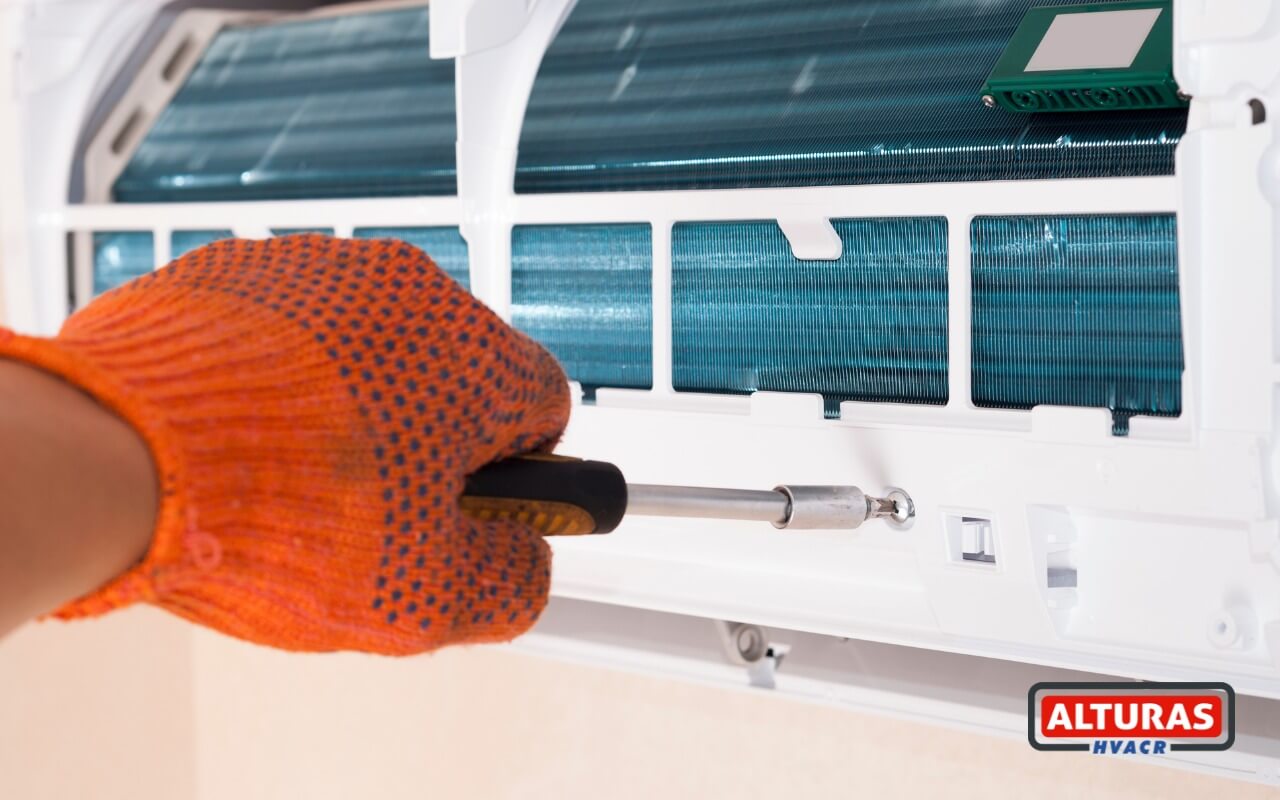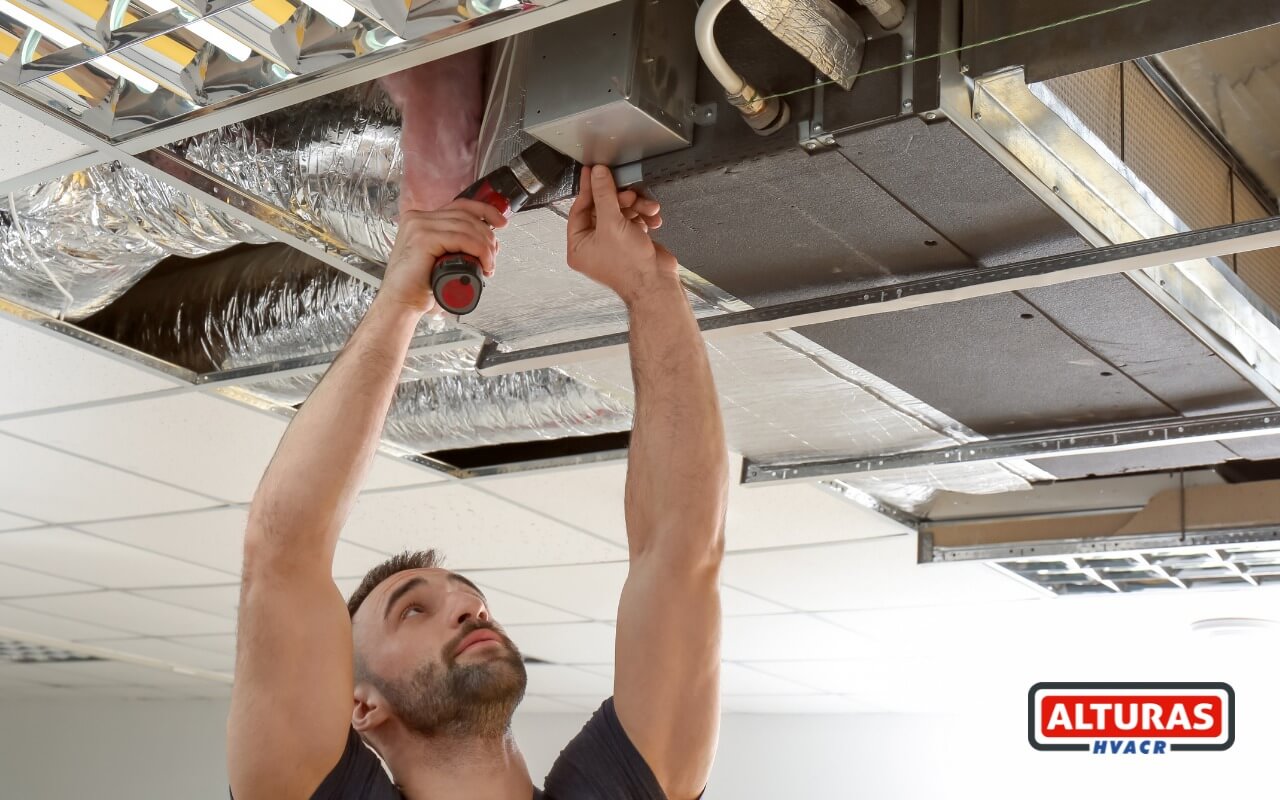Installing a central air conditioner is a significant investment that requires careful planning and consideration. This central air conditioner installation guide aims to provide you with detailed information and step-by-step instructions to ensure a successful installation.
What is a Central Air Conditioner?
A central air conditioner is a system that cools and dehumidifies the air in your entire home. Unlike window units or portable air conditioners, a central system distributes cooled air through a network of ducts. This method ensures consistent and comfortable temperatures in all rooms. Central air conditioners offer numerous benefits, including improved indoor air quality, reduced noise levels, and increased home value.
How does Central Air Conditioner work?
Are you wondering how your central air conditioner works? A central air conditioner relies on ducting and registers (openings) to carry cool air all over your home. Essentially, the system pulls air in from outside, cools it, and then pushes it throughout the house via the ductwork.
How to Choose the Right Central Air Conditioner?
Selecting the right central air conditioner is crucial for optimal performance and energy efficiency. Consider the following factors:
Cooling Capacity
The cooling capacity is measured in British Thermal Units (BTUs) and determines the system’s ability to cool your home effectively. An undersized unit may struggle to cool the space, while an oversized unit can lead to short cycling and reduced efficiency.
Energy Efficiency Ratings
Look for the Seasonal Energy Efficiency Ratio (SEER) rating when choosing a unit. Higher SEER ratings indicate better energy efficiency and potential savings on your utility bills.
Budget Considerations
Consider the initial cost, long-term energy savings, and potential rebates or incentives when determining your budget for a central air conditioner.
To calculate the cooling capacity required for your home, consider factors such as square footage, insulation levels, climate, and the number of windows and occupants. An HVAC professional can assist in performing accurate calculations based on these factors.
Pre-Installation Preparation
Before installing a central air conditioner, proper preparation is essential. Follow these steps:
- Obtain Permits: Check with your local building department to determine if any permits are required for the installation. Compliance with local regulations ensures safety and adherence to standards.
- Assess Existing Ductwork: An evaluation of the existing ductwork is necessary to determine if it can accommodate the new system. This assessment helps identify any leaks, blockages, or necessary repairs.
- Evaluate Electrical System: Verify that your electrical system can handle the increased load of the central air conditioner. Upgrades may be necessary to ensure safe and efficient operation.
- Assess Insulation: Adequate insulation plays a vital role in maintaining energy efficiency. Evaluate the insulation in your home to identify areas that may require improvement.
Safety Precautions During the Installation
Follow these safety guidelines:
- Handling Refrigerants: Refrigerants are hazardous substances and should only be handled by certified technicians. Improper handling can result in injuries or environmental damage.
- Electrical Connections: Ensure the power supply is turned off before making any electrical connections. If you are not experienced with electrical work, consult a professional electrician.
- Proper Ventilation: Adequate ventilation is essential when working with central air conditioning systems. Ensure that the installation area has proper airflow and ventilation to prevent overheating or poor indoor air quality.
Central Air Conditioner Installation Process

The installation process involves several crucial steps. It is recommended to hire a professional HVAC contractor for this task. Here is an overview of the installation process:
Find a Central Air Conditioning Unit
Research brands and compare costs online or visit local cooling and heating stores for advice.
Related: Central AC brands to avoid
Select the Installation Location
Choose a place with good airflow, accessibility for repair and maintenance, and away from social areas to minimize noise disturbance.
Ductwork Installation
If your home already has ductwork, it may require modifications or repairs to accommodate the new system. Properly sealed and insulated ducts ensure efficient airflow.
Install the Outdoor Unit
Select an optimal site for installing your outdoor unit. Ensure it doesn’t block any pathways and avoids blowing hot air directly into the garden or inside the house. Position the pad where the air conditioner will be situated. Leave a gap of 6-10 inches between the outdoor unit and any walls to facilitate adequate air circulation.
Electrical Connections
The central air conditioner requires electrical connections to power the unit. A qualified electrician should handle this step to ensure safety and compliance with electrical codes.
Connect the Thermostat
Remove the cover of the thermostat connection. Find the control wiring. You should have a connecting wire coming from your condenser unit, which will connect to your thermostat. Refer to your installation manual to connect the correct wires.
Refrigerant Charging
A professional technician should handle refrigerant charging to ensure the correct amount is added, following manufacturer guidelines. Improper refrigerant levels can impact system performance.
Run Your AC Unit
Check and run your air conditioning system by switching it on. Ensure that each duct is emitting cold air into the room, and your central air conditioner functions smoothly, operating quietly yet effectively.
Maintain the AC system
Regularly check for problems like refrigerant leaks and electrical faults to ensure the system functions efficiently and keep energy bills low.
Cost of Central Air Conditioning Installation in 2024
There are chances that your contractor may negotiate a lower rate for your AC unit that is based on their brand and manufacturer relationships, you will still have to pay labor costs for the unit’s installation. You may also have to finance the pre-installation work, which may include pouring a concrete slab or making any sort of changes to fit the new assembly on your roof. However, the professional installer will handle the details of their job.
On an estimate when added to an existing forced-air heating system, the central air conditioner installation cost for a 2,000-square-foot home is $3,000 to $15,000 and can be done by two technicians in two to three days, often with little or no change to the ducting.
Central Air Installation Cost Calculator
The cost of installing a central air conditioner can vary widely depending on your specific needs. While the national average for replacement or new installation falls between $6,423 and $11,800, your 2,000-square-foot house might be closer to $8,770 on average. This includes the cost of the unit itself, which typically ranges from $2,600 to $3,690 depending on its size and efficiency.
While considering a central air conditioner installation or repair there are certain things that you should know to estimate the cost of an HVAC installation project and those aspects are:
- Size of your home
- Square footage of rooms needing to be cooled
- Central AC system brand
- Energy-efficient level (SEER)
- Potential ductwork installation or replacement
- Average local costs for hiring a contractor in your area
Do It Yourself Central Air Conditioner Installation Guide

We should always keep in mind that some projects should always be tackled by professionals or DIYers with extensive previous experience as well. Central air conditioning installation would involve too many specialized skills as well as too high a risk of failure to attempt them without any sort of professional help. If you want to do it yourself follow these central AC installation instructions correctly.
Check the ductwork: Ensure there are no gaps, cracks, or sagging that can impact air quality and increase cooling costs.
Consider safety aspects: Tempting as DIY AC installation might be, crucial aspects like high-voltage wiring, toxic refrigerant, and complex regulations make professional help critical.
Connect the AC system: Secure the unit, install indoor parts if necessary, measure the refrigerant line and drain piping, connect thermostat and electrical lines, and eliminate contaminants.
Consult the installation guide: Read the manufacturer’s instructions for detailed installation guidance and seek professional help if unsure.
Check the AC system: Verify that the thermostat, compressor, and airflow are working properly, following the instructions in the unit’s product guide.
Common FAQs about Central Air Conditioner Installation
How much is it to install a central air conditioner?
The price to install a central air unit starts at just under $3,000 and can go as high as $15,000. The exact figures vary quite a bit based on the unit you are having installed and where you live, among other factors.
How do I install a central air conditioner thermostat?
Installing a new central air conditioner thermostat involves disconnecting the old unit, turning off the power to your heating and cooling system, mounting the wall plate for the new system, and making sure that all wires are connected correctly. In some cases, you’ll also need to install batteries. Because manufacturer directions are often unclear, it is recommended that buyers contact a licensed HVAC professional to ensure proper installation.
How do you install a central air conditioner in a home with central heat?
While it is possible to add a central air conditioner to your home with an existing central heat system, the price and the time required may make it more than a DIY task. Instead, it’s recommended that you reach out to a certified HVAC professional who will be able to properly assess your system and install your central air unit correctly.
Is Central AC hard to install?
Installing a central AC system is hard work. You’ll probably be required to do a lot of manual labour, including lifting heavy equipment, pouring a concrete foundation and even getting under the house. If this is not your idea of fun, you can pass this work over to professional experts.
How long does a central AC install take?
Generally speaking, the average installation will take anywhere from four to eight hours, which means the process of removing the old unit and being able to turn on the new one should be finished within a day.

